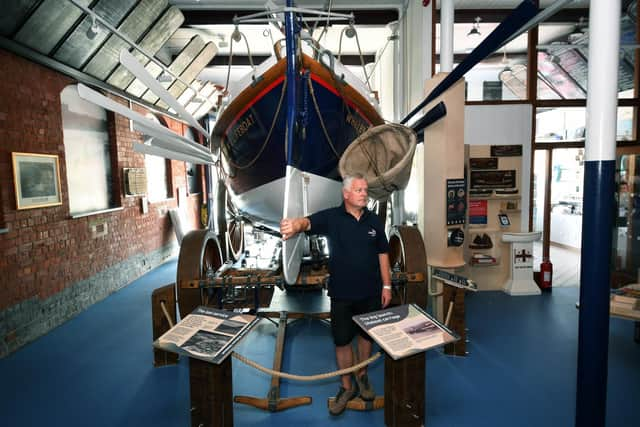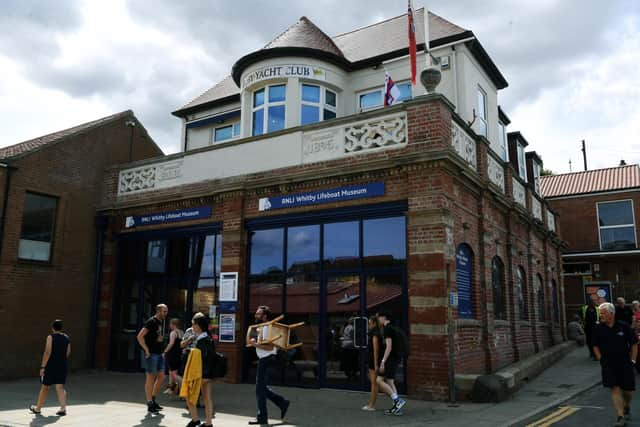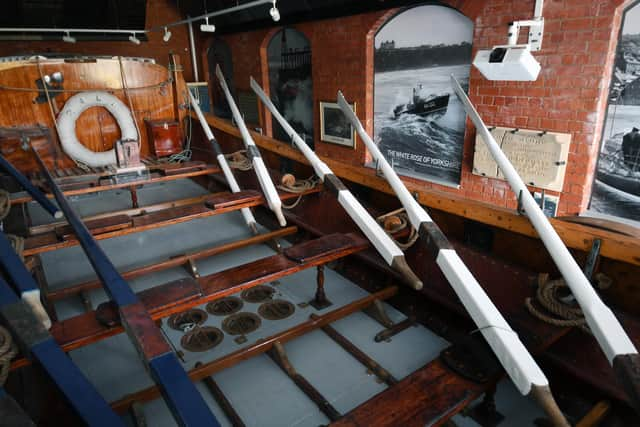New look RNLI museum and historic lifeboat in Whitby revealed after long restoration project
and live on Freeview channel 276
However, the location of The Robert and Ellen Robson, just yards from the harbour at Whitby meant the boat, and former boathouse turned museum, have been exposed to the elements and was starting to see signs of decay.
However, a lifelong supporter of the museum, on Pier Road at the heart of the town’s sea-faring heritage, left a legacy in their will to be used on restoration of the boat and museum, making sure the history and story of the RNLI in Whitby could continue to be told for years to come.
Advertisement
Hide AdAdvertisement
Hide AdThe museum closed in September last year and the Robert and Ellen Robson was taken to a local boatyard for a programme of painstaking repairs undertaken by museum curator Neil Williamson and two other volunteers.


They stripped the varnish and paint off the boat, sanded and oiled the historic carriage it sits on and was used to transport from boathouse to sea and hired a professional painter to give it a make-over, using expert historic advice to make sure the colour scheme was accurate.
Mr Williamson said: “It has been a major amount of work. I feel immensely proud and I speak for the team and the two others that did it with me. I never thought I would be doing it but have a calling for the history.”
So much of RNLI missions in Whitby can be seen in the museum, including old life-jackets and uniforms, tools, a seat from The White Rose lifeboat which served in the 1970s and the oars from the lifeboat which was onboard one of the UK’s most famous shipwrecks, The Rohilla of 1914.


Advertisement
Hide AdAdvertisement
Hide AdService boards line the walls of the museum with details of all call outs dating back to 1862.
Other calls of note include several around 1940 as due to the war the port’s lights had to be switched off which caused many vessels to run aground.
As well as documenting the history of the RNLI it is hoped the revamped museum can play a part in the future of the work of the life-saving organisation which operates as a charity.
The museum is looking to re-commence visits from schools and youth groups to educate about the dangers of the sea, recruit volunteers and make people aware that the charity is reliant on funding and public donations.


Advertisement
Hide AdAdvertisement
Hide AdMr Williamson added: “We would not have been able to do this without the legacy. The RNLI is about stories of bravery, courage and survival and how relevant that is going forward. The story does not end in this building.”
The story of The Rohilla is told with new display boards and items recovered. The boat was sailing to Dunkirk to evacuate wounded soldiers but ran aground during a storm and broke up on the cliffs at Saltwick.
There were numerous attempts to rescue the crew from six RNLI lifeboats but 83 lives were lost. One of the survivors was Mary Kezia Roberts, who also survived the sinking of The Titanic, and the case she had with her is one of the exhibits.

